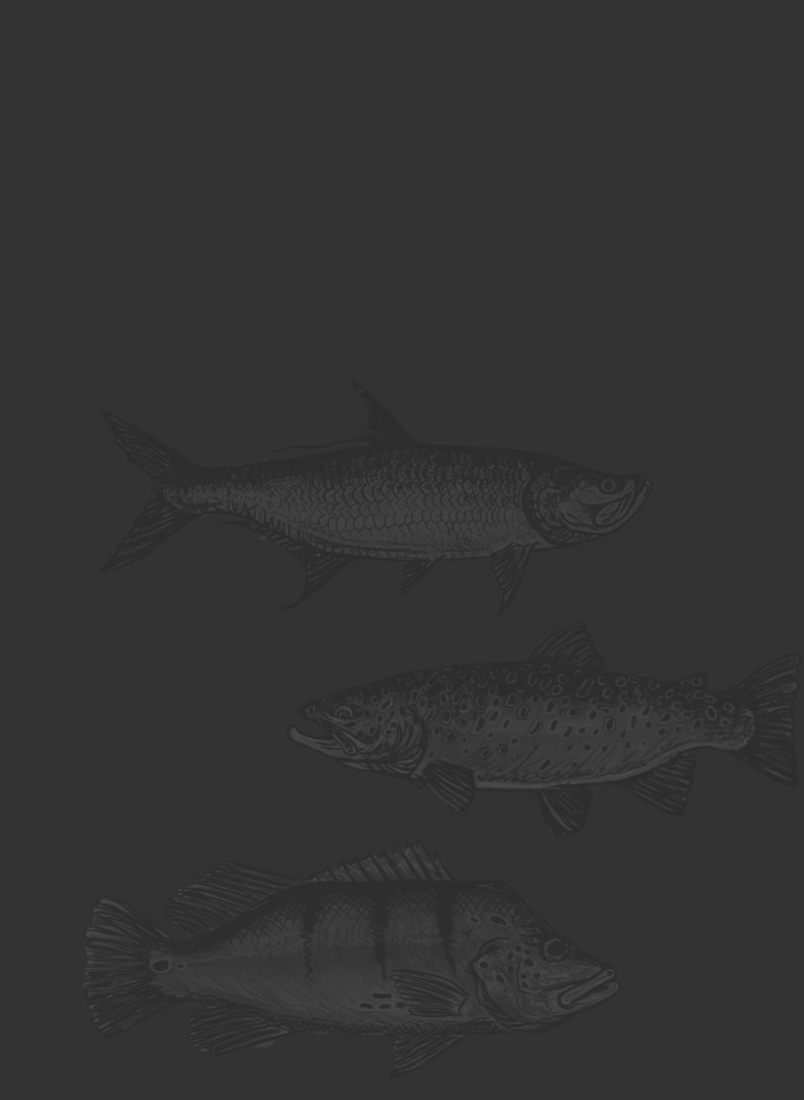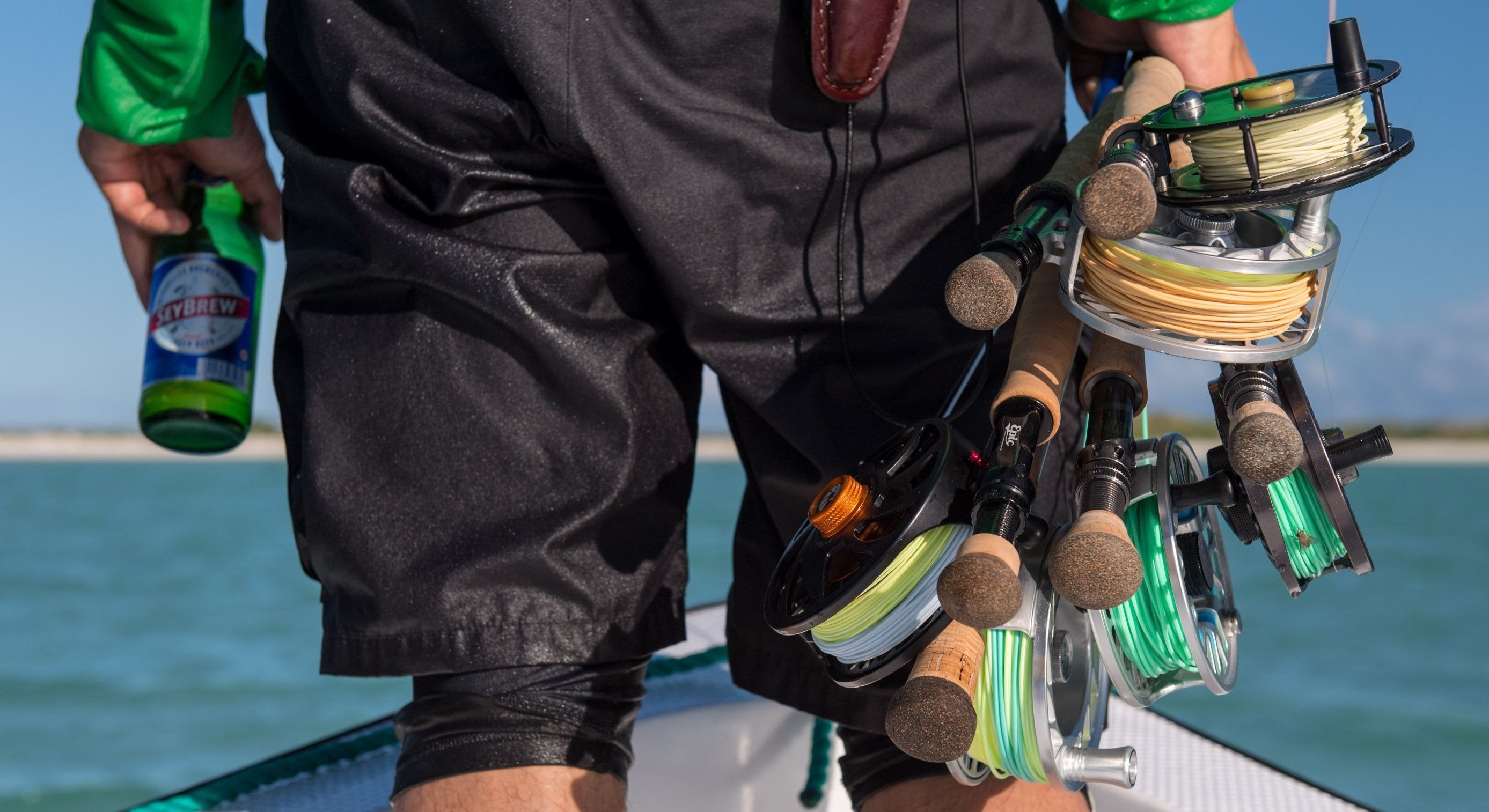When it comes to hatches, reliability is everything. Every year, anglers travel to the U.S. West or head to their local river in hopes of timing famous hatches such as the green drake or salmonfly, only to find they arrived a few days early or perhaps on the tail-end of the party.
These hatches are some of the most exciting anywhere: massive stoneflies marching their way up river rock to sun their wings before taking flight, or big drakes floating downstream, wings at the ready forming an armada of tiny sailboats. Fish (and fisherman) go nuts for these hatches, but the hard truth is that their emergence is relatively short-lived, sporadic, and sometimes difficult to nail down when and where they begin. This is not the case for the pale morning dun (PMD), one of the most reliable, abundant, and wide-spread hatches of the year -- and a favorite for many western anglers.
PMD Characteristics
There are technically multiple species of pale morning dun whose hatches overlap during the warmer months. As one species tapers out, the other is starting, though there is overlap at times! Similar in everything but size, the first PMDs of the season will fare on the larger size, approximately #14 - #16, transitioning into a smaller #16 - #18 as the season progresses and the second species begins to emerge. PMDs as large as #12 or as small as #20 do occur, but a #16 is your all-around sweet spot. The same patterns will work for both species, but the size of the fly absolutely matters.
As their name suggests, pale morning duns are typically a light yellow/olive with the occasional hint of chartreuse or tan, though the male spinners are easily distinguished by their reddish-brown/rust coloration. Their wings are a dun gray, with a dash of yellow on the forewing. They have three tails in their nymph, dun, and spinner stages, and all phases of their metamorphosis are an important food source for feeding trout.
Timing the Hatch
The first PMDs of the season can arrive as early as late may, peaking in June/July, and tapering out with the approach of Autumn. Hatches can range from a mere trickle, to blanket hatches that are nigh-impossible to successfully fish due to the sheer volume of bugs on offer.
Generally speaking, cooler, overcast conditions make for a better hatch. PMDs will and do hatch on warm, blue-bird days, but the hatches are less pronounced and shorter. If its going to be a hot day, the hatch will likely start before lunch, while optimal conditions will push it into the afternoon and often produces a longer, denser hatch.

Its common to find trout feeding on spinners at first light into early morning, and again in the late afternoon/evening. If you're finding swarms of spinners mating, it won't be long before their spent forms are easy targets for sipping trout. PMD spinner falls are widely regarded as some of the best in the west, bringing pods of trout to the surface and anglers to the bank up until the last rays of evening light.
River conditions will obviously play an important role on the size and length of PMD hatches. The temperature consistencies of a tailwater will favor a prolonged hatch season, while a hot summer day or low water conditions on a freestone will limit the length and intensity of hatches.
Top PMD Nymphs
Anglers should not overlook nymphing before or during a PMD hatch, as it is it can make for excellent fishing and is often more productive than their dun stage. Pale morning duns are known to move from the river bed to the top of the water column multiple times during emergence, giving trout optimum opportunity to feed. Combine that with the sheer volume of nymphs in the water during a hatch, and there are a lot of calories to be had.
If you're seeing fish flashes as trout move in and out of a feeding lane or a glimpse of a white mouth near the river bed while duns float by, you should be thinking nymphs or emergers. It isn't uncommon for trout to cue up for the nymphal or emerging forms of PMDs, while the duns float past freely. Read the water, and let fish behavior dictate your approach.

1. TNT Jig
The TNT Jig is going to be an excellent searching fly, and one we opt for before the onset of a hatch or early in the season. The fly has a great profile when wet, and the combination of a small hotspot tail and dubbed thorax in yellow makes it an excellent PMD nymph.
Consider fishing the TNT Jig as a dropper beneath an unweighted nymph, emerger, or soft hackle, allowing you to dial in what portion of the water column the trout are focused on.
2. Crackback PMD
A super buggy nymph, the crackback PMD comes both in weighted and unweighted variants. As the name suggests, the wing case on the fly is "cracked," simulating a PMD adult just beginning to emerge. If you're watching fish actively feed below the surface at the onset of a hatch or even during, this is a must try.
3. Pheasant Tail
Some flies aren't going anywhere, and we'd be remiss if we didn't mention the pheasant tail. Your standard beadhead pheasant tail can get it done during most mayfly hatches, with the key elements being fly size and a drag-free drift. Additionally, a soft hackle pheasant tail can effectively simulate an emerging PMD, and its not a bad idea to have some of each weighted and unweighted. Finally, try an unweighted pheasant tail as your point fly with a crackback PMD, TNT jig, or weighted pheasant tail as a dropper.
When all else fails, an unweighted pheasant tail treated with the lightest bit of floatant is a great tactic for discerning trout. The fly will ride in the surface film, simulating a PMD that is attempting to or has failed to emerge -- making it easy pickings. If you're struggling to track your fly, set the hook each time you see a rise in proximity to your fly.
--
With those three in mind, there are plenty of other great PMD nymph options on the market. A hare's ear is an easy substitute for the pheasant tail -- a fly that should be in every angler's nymph box. The two most important elements of finding success while nymphing is going to be the size/profile of the fly, and more importantly, a drag-free drift!

Top PMD Emergers & Cripples
Its quite common for trout to key in on emerging PMDs or cripples versus mature duns, frustrating anglers as their dry fly drifts perfectly over the nose of an actively feeding fish. The PMD is slow to emerge, making this transitional phase a really opportune time for predation. Emerging bugs and cripples require very little effort from the trout, and any indicators such as a nymphal shuck or partially emerged wing act as a trigger point. Its a good idea to start with an emerger pattern if you are witnessing fish rising but no duns on the surface, and especially so if fish are not visibly feeding on duns during a big hatch.

4. PMD Sprout
The sprout is a killer mayfly emerger that comes in a number of forms, including BWO, callibaetis, and trico.
The bulk of the fly rides below the surface, including an antron shuck and lightly dressed body. The hackle of the fly rides even with the surface film tied around a foam post. The white foam post gives this emerger an advantage over others, giving the angler better visibility and tracking without sacrificing the appearance or presentation of an emerging PMD. Additionally, the foam post allows you to fish the sprout in riffles or more turbulent water without drowning the fly.
5. PMD CDC Emerger
CDC is the gift that keeps on giving, one of the best naturally bouyant and buggy materials out there. You can treat the CDC with floatant if you're having trouble keeping track of it, but to get a nice low-riding fly, leave the CDC wing as is to remain bouyant while submerging the body and trailing shuck fibers beneath the surface film. If drowned, dry the feathers by rubbing the CDC with your fingers or against your palm till dry, or use a rubber band to "ping" the fly and shake off excess water.
6. Captive Dun
A Rene Harrop classic, this is a fly every angler should have when fishing a PMD hatch. The fly's tailing fibers are typically tied with mallard flank, with the addition of some antron fibers to simulate a shuck. However, the CDC loop wing is what really seals the deal for picky fish, perfectly imitating a PMD's wings in the latter stages of emergence for becoming a dun. The captive dun can be difficult to track due to its small profile, so its not a bad idea to fish it in tandem as trailing fly behind a more visible dun dry.
7. PMD Film Critic
A pattern by the legendary Bob Quigley, the film critic is a home-run of an emerger pattern. It will ride in the surface similar to the sprout, with tail and body submerged, but the use of sparse, stacked hackle means it will ride a smidge lower than a traditional parachute. Additionally, Quigley uses a prominent wing at the hook eye that gives the fly great visibility. On slicked out, slow-moving spring creeks where discerning trout are able to study every detail, the film critic is a real winner.
8. Last Chance Cripple
The Last Chance, another Rene Harrop staple, is one of the most effective mayfly cripple patterns ever.
Many Harrop patterns utilize biots for the body, offering a realistic, natural segmentation. The fly sports a sparse shuck, slender profile, and combines both a CDC wing and a few turns of hackle to make a soft-landing yet highly bouyant mayfly. A great pattern for both soft water and heavier currents during a PMD hatch.

Top PMD Dry Flies & Spinners
There are a lot of good options, but these are some tried-and-true patterns that have been working for decades.
The key for targeting rising fish during a PMD hatch is to pick your fish and time your cast. While the water may be boiling with rising fish and you feel you can just pitch it in there, its better to choose a fish and put the fly in its fishing lane. If there are a lot of bugs on the water, the trout are not going to move out of its way to take a risk on your imitation. Secondly, similar to a metronome, trout will find a feeding rhythm, and timing your presentation can make the difference between success and frustration. Start with the back of the pod and work your way up to you don't put down those happy fish!
+ Dry Fly Fishing: What, When, and Where

9. Sparkle Dun
One of, if not the first, PMD dry flies you should reach for -- the iconic sparkle dun. This fly is responsible for many, many thousands of trout to hand, and is one of the best all-around mayfly patterns ever.
The Sparkle Dun was orginally tied for the selective trout of the Henry's Fork, and quickly became a favorite everywhere. Somewhere between emerger and dun, a z-lon shuck imitates the final stages of emergence before the dun is ready to sun its wings and fly away. The fly's splayed deer hair wing offers a great wing profile, and offers good visibility while still riding low.
10. Rusty Spinner
The rusty spinner is a must-have if you plan on fishing all phases of the hatch or perhaps getting onto the water late in the evening. After PMDs mate, they take on a dark rust color before their spent forms fall to the river with their wings splayed -- and trout quickly take notice. Profile and size is key, and the rusty spinner's tail, slender biot body, and splayed polypropylene wings are the perfect foil.
The bulk of spinners will be found in the evening or early in the morning, so tracking your fly can be difficult -- especially during heavy hatches. In this situation, you could opt for the hi-vis spinner which features a bright post to help distinguish your fly amongst the others and during low-light conditions.
11. CDC Parachute Spinner
Another Harrop classic, the CDC parachute spinner is a great alternative to the traditional rusty spinner and a favorite amongst many anglers. A great choice for spring creeks and slack water, the CDC parachute spinner lands incredible light and rides flush with the surface film buoyed by a sparce hackle parachute. The CDC post makes the fly easier to track than a traditional spinner, and also adds more natural buoyancy.
12. CDC Biot Comparadun
The CDC Biot Comparadun is a more modern take on the classic comparadun. The primary difference between the cdc biot comparadun and the original is the use of a biot body and the substitution of CDC for the traditional deer hair wing. The result is a realistic fly profile that also lands incredibly soft and rides flush with the surface. The CDC biot comparadun is best for slicked out conditions, and a sort of secret weapon when it comes to super picky fish.
--
Next time you're on the water and the pale morning duns start hatching, we hope these tips and recommendations bring you success. If you're in Southwest Montana, come by Yellow Dog Fly Shop for all of your fly and gear needs!
Related Articles:
- The Top 12 Blue-Winged Olive/BWO Flies
- Montana Fly Fishing Hatches Made Simple
- Fly Fishing for Trout: What Makes a Great Grasshopper Pattern
- The Top Streamers for Trout
- Beyond the Salmonfly: 6 Other Montana Fly Fishing Hatches
- The Top 9 Mother's Day Caddis Flies
- The Top 8 Hopper Flies






























